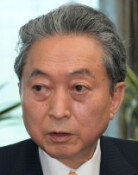Prospects for 10 tril. won arms purchase project (3)
Prospects for 10 tril. won arms purchase project (3)
Posted April. 11, 2001 18:38,
Strong opposition of China and Russia to a national missile defense system promoted by the conservative and hard-line George W. Bush administration of the United States has created tension in Northeast Asia. It has affected Korea, too. The Seoul government had to face diplomatic difficulties during its summit meetings with the United States and Russia.
Strictly speaking, the SAM X program and KDX 3 program of the X project being launched by the defense ministry here seeks to introduce a weapons system identical to a theater missile defense system, an extension of the national missile defense system bolstered by a ballistic missile defense.
Thus, some countries surrounding Korea might well look askance at these programs. As the systems would depend on weapons of American make, they could involve pros and cons over prices and the mode of propulsion.
No participation in TMD:
Japan declared its participation in the joint research and development of a theater missile defense (TMD) maritime defense plan in the wake of North Korea`s test-firing of Daepodong missiles. Taiwan also expressed keen interest in the project. South Korea said it would not join the project for financial and technical reasons, citing the narrowness of its peninsular land, where the proposed TMD could not fit into a war situation.
Only part of the TMD weapons system would be acquired under the SAM X and KDX 3 programs of Korea and those weapons would not necessarily lead to involvement in the project. However, changes in the strategic position of Northeast Asia may cause Washington to plead for Korea`s participation in the project as its military ally.
Korea is designated as a location for ground-based radar under the U.S. NMD plan, to be completed by 2015. It could turn out to be a bone of contention at any time.
PAC 3 too expensive:
SAMX program calls for replacement of outdated Nike to erect a long-range, high-altitude aerial defense network. At first, Russia tried to enter the bidding with its S3000 model but later dropped the plan, leaving the PAC 3 model of the United States as the sole candidate. However, its manufacturer, Raycion, raised its asking price 50 percent, forcing Korean defense officials to postpone on-site testing and evaluation and instead undertake a review. Some of them point out that the greatest North Korean threat comes from long-distance guns placed in forward areas and expensive missiles may not be required to counter them. Nike missiles face mothballing next year, and South Korea`s air defense shield would be in jeopardy in the absence of an alternative model.
Open bidding or a private contract:
The Aegis destroyer is envisaged as the capital ship of a strategic mobile fleet planned by the Korean navy. Its hull could be built in Korea but most of the vital combat systems, including radar and interceptor missiles, which account for about 70 percent of the total costs, would have to be imported. The United States and Japan already have ``dream`` destroyers. Spain is building an Aegis ship. Japan and Spain count almost entirely on American technology for the destroyers.
Defense officials believe only the Aegis model of Lockheed Martin is equipped with NTWD high-altitude defense capability. Radar produced in the United Kingdom and the Netherlands are weak in voltage, making it difficult for them to detect long-distance high-speed ballistic missiles.
Lockheed Martin recently received orders for two Aegis destroyers each from Japan and the United States, and proposed that it is ready to sell another to Korea under the same terms. The defense ministry once considered a private contract along the lines of the U.S. foreign military sales program and later decided to opt for a competitive bidding to rule out disputes.
The consensus is that the Seoul government will end up buying U.S. made destroyers.
Lee Chol-Hi klimt@donga.com





![태국 환율 왜 이래…범죄자금 유입? 바트화 초강세 미스터리[딥다이브]](https://dimg.donga.com/c/138/175/90/1/wps/NEWS/IMAGE/2025/12/17/132987491.1.jpg)

